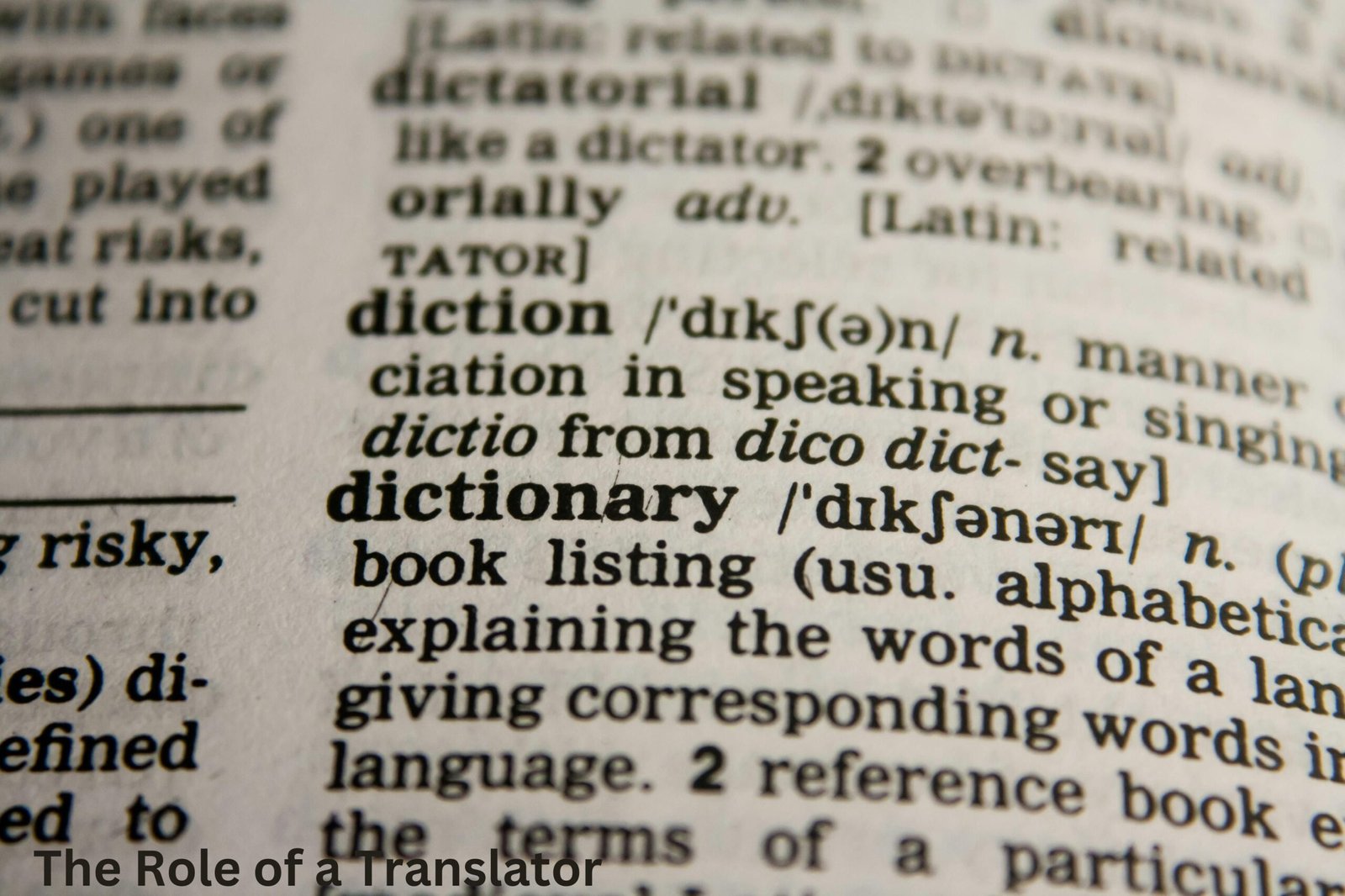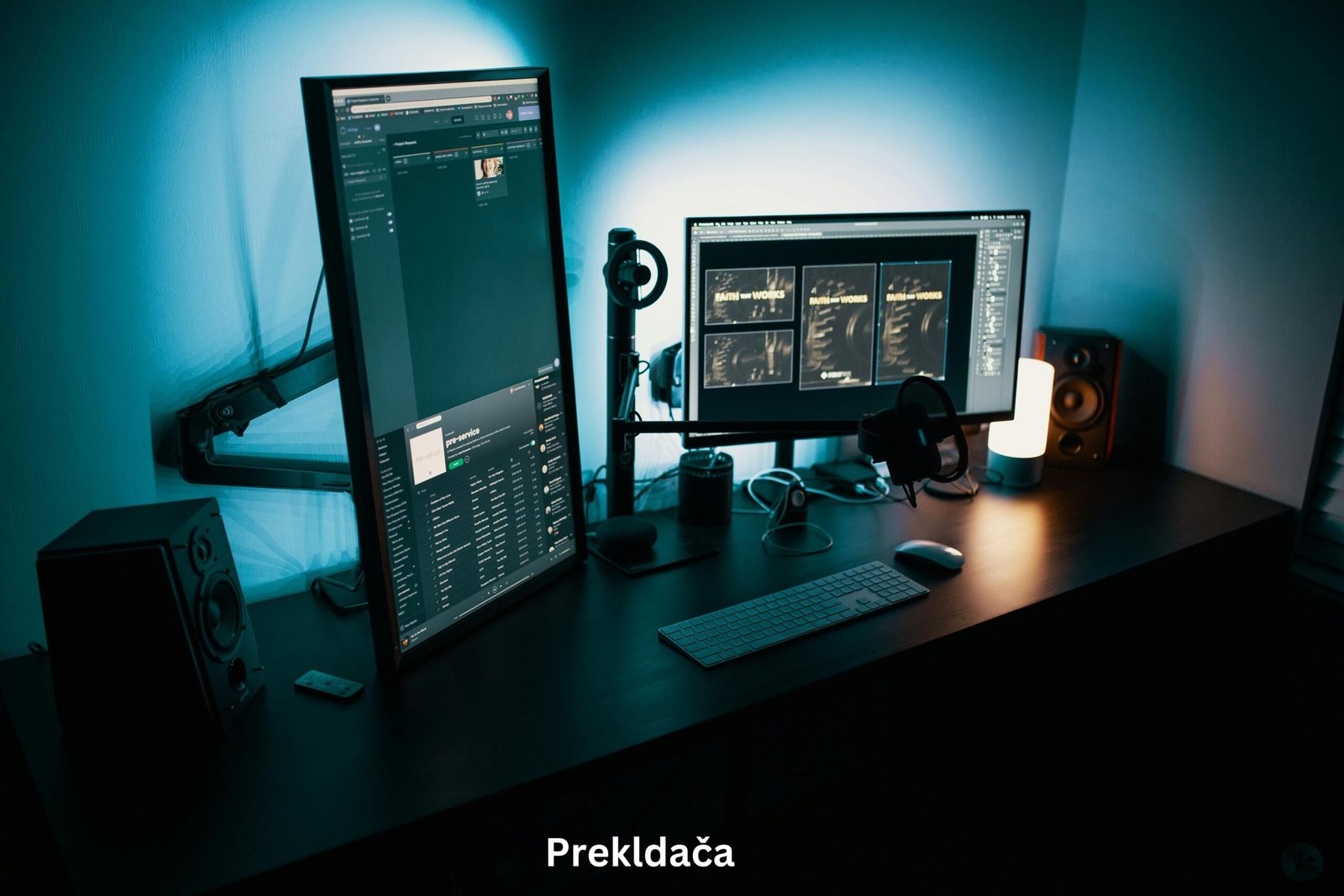The ability to communicate effectively across cultural and linguistic boundaries is more crucial than ever in today’s globally interconnected society. The work of translators, who seek to bridge the gap between languages and enable clear, efficient communication, is fundamental to this interaction. In order to ensure that ideas, information, and emotions are correctly transmitted from one language to another, the function of a translator—called “prekladač” in Slovak—is vital.
How Does a Translator Work?
One who specializes in translating written material from one language to another is known as a translator. Translators concentrate on written word, as opposed to interpreters who deal with spoken language in real-time. In order to make a piece of writing understandable The Role of a Translator to those who speak a different language, it is the job of the translator to do more than simply change the words from one language to another.
Many different industries rely on translators, including those dealing with literature, commerce, law, healthcare, and technology. The language used might change drastically depending on the situation, thus it’s necessary to have specific expertise in each field. To translate a The Role of a Translator legal document, for instance, one must be well-versed in the specialized vocabulary of both languages; to translate a book, on the other hand, one may need to use their imagination to convey the author’s intended tone and style.
The Value of Translation in Today’s Interconnected World
Translation has never been more crucial than in today’s globally linked world. Websites, marketing materials, and product instructions are all examples of information that businesses require translated in order to reach customers all over the world as they The Role of a Translator grow into new markets. Translation is a vital tool for governments and international organizations to effectively interact with varied populations and guarantee that all parties comprehend treaties, agreements, and laws.
Translation is also crucial for cultural interaction. One way that individuals from other cultures may learn about and enjoy one another’s literature, art, and customs The Role of a Translator is through media that have been translated into English. If not for translation, our knowledge of the world would remain confined to the confines of our own languages.
Competencies Necessary for Proficient Translation
Mastering the art of translation calls much more than only bilingualism. Fluency in the target and source languages, a large vocabulary, and the capacity to articulate complicated concepts precisely are all necessary components. Essential abilities for translators include the following:
1. Fluency in Language
The ability to fluently speak both the original and target languages is essential for every translator. That involves picking up on subtleties, idioms, and The Role of a Translator cultural allusions that the target language might not have a word for.
2. Being cognizant of various cultures
There is a strong connection between culture and language. To make sure the translation is accurate and suitable for the target culture, a good translator has to know the history and customs of both the original and target languages.
3. Competence in Research
Translators frequently come across new phrases, particularly in specialist domains such as technology, law, or medical. Finding precise translations of these phrases and comprehending their context requires strong research abilities.
4. Meticulousness
Careful attention to detail is essential for accurate translation. Translators need to be very careful while proofreading and editing their work since even a little mistake might alter the intended meaning of a piece.
Five, originality
In literary translation in particular, originality is paramount. When there is no direct translation into the target language, translators still need to discover ways to express the author’s intended mood, style, and emotional impact.
Automated Translation Platforms’ Ascent
Google Translate and other machine translation services have exploded in popularity in the past few years. These resources offer real-time translations of spoken and written language by utilizing algorithms and massive linguistic databases. Although machine translation has gone a long way, it isn’t perfect. It struggles to understand complicated phrase patterns, cultural subtleties, and context.
While machine translation excels at interpreting plain English, it frequently fails miserably when faced with more intricate or nuanced content. To provide just one example, robots may struggle to properly interpret colloquial idioms, jokes, and metaphors. Therefore, for accurate translations, particularly in artistic and professional settings, human translators are still necessary.
Human-Machine Collaboration in Translation: A Vision for the Future
With the rapid advancement of machine translation technology, it is quite probable that human and machine translation will work together in the future of translation. Human translators may spend more time making sure the translation is correct, culturally acceptable, and consistent in style since machine translation can perform the initial translation of huge amounts of content.
Together, people and robots can do more in less time and at lower expense without sacrificing the quality of professional translation. Because machine translation may take care of some of the more monotonous chores, translators are able to work faster and take on more assignments.
Difficulties Encountered by Interpreters
Despite the critical nature of their job, translators frequently encounter formidable obstacles. Making sure the translation accurately conveys the original text’s tone and meaning is one of the most difficult tasks. Because the reader’s experience is so dependent on the author’s voice and style, this may be especially challenging when translating literary works.
Managing the disparity in value systems and cultural conventions between the two languages is another obstacle. What one culture may seem courteous or suitable may be insulting or improper to another. Translators need to be mindful of these cultural variations if they want their translations to reach their intended readers.
Last but not least, translators are already under a lot of pressure to get their work done quickly, which might lead to mistakes. Effective time management is a vital ability for translators because of the delicate balance that needs to be maintained between speed and accuracy.
Understanding and Cooperation via Translation: Its Function
The essence of translation is to let individuals who speak different languages communicate with one another. The importance of this function is growing in an ever more interdependent society. Translators play an important role in fostering understanding and collaboration across cultures by removing linguistic obstacles. This, in turn, helps to create a more welcoming and inclusive world.
Whether it’s a medical report that permits a patient to obtain treatment in a distant country, a legal document that promotes international trade, or a book that allows readers to experience a new culture, translators play an essential part in our world. Their efforts guarantee that barriers to comprehension, communication, and advancement are not posed by linguistic variations.
In summary,
In our increasingly international society, the translator’s position, or “prekladač,” is crucial. Skilled human translators who can negotiate cultural and linguistic issues are becoming increasingly important as the need for translation services rises. The human element is still crucial for creating accurate, nuanced translations that connect with the intended readers, even though machine translation technologies are a great help.
Looking ahead, we may be optimistic that translation services will become even more accessible and efficient as machine learning and human translators work together. This will help to maintain cultural sensitivity, accuracy, and clear communication between languages. Translators do more than simply change the words on a page; they bridge the gap between cultures, ideas, and people in a globalized society where mutual understanding and collaboration depend on clear and accurate communication.








